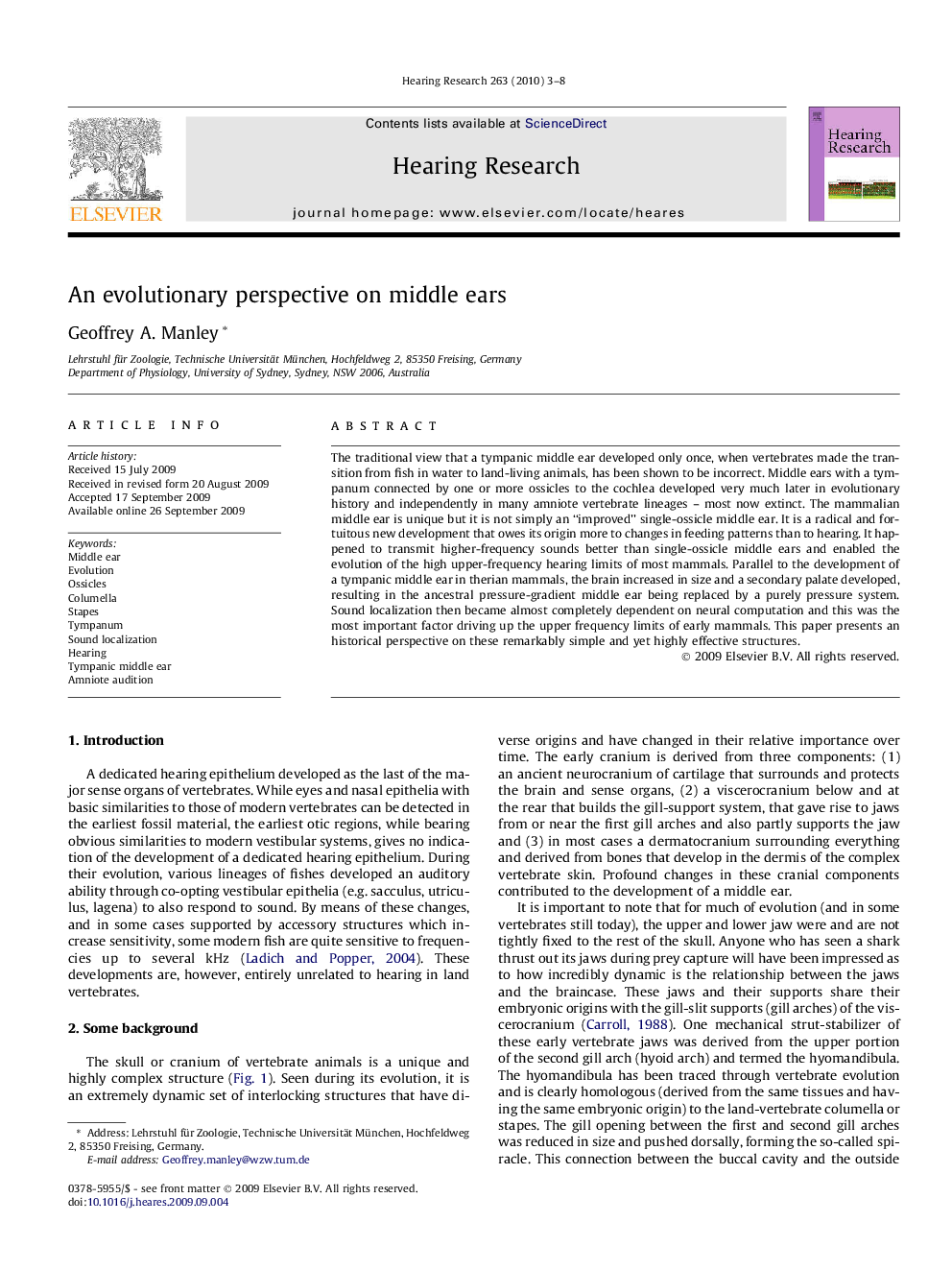| کد مقاله | کد نشریه | سال انتشار | مقاله انگلیسی | نسخه تمام متن |
|---|---|---|---|---|
| 4355713 | 1615637 | 2010 | 6 صفحه PDF | دانلود رایگان |
عنوان انگلیسی مقاله ISI
An evolutionary perspective on middle ears
دانلود مقاله + سفارش ترجمه
دانلود مقاله ISI انگلیسی
رایگان برای ایرانیان
کلمات کلیدی
موضوعات مرتبط
علوم زیستی و بیوفناوری
علم عصب شناسی
سیستم های حسی
پیش نمایش صفحه اول مقاله

چکیده انگلیسی
The traditional view that a tympanic middle ear developed only once, when vertebrates made the transition from fish in water to land-living animals, has been shown to be incorrect. Middle ears with a tympanum connected by one or more ossicles to the cochlea developed very much later in evolutionary history and independently in many amniote vertebrate lineages - most now extinct. The mammalian middle ear is unique but it is not simply an “improved” single-ossicle middle ear. It is a radical and fortuitous new development that owes its origin more to changes in feeding patterns than to hearing. It happened to transmit higher-frequency sounds better than single-ossicle middle ears and enabled the evolution of the high upper-frequency hearing limits of most mammals. Parallel to the development of a tympanic middle ear in therian mammals, the brain increased in size and a secondary palate developed, resulting in the ancestral pressure-gradient middle ear being replaced by a purely pressure system. Sound localization then became almost completely dependent on neural computation and this was the most important factor driving up the upper frequency limits of early mammals. This paper presents an historical perspective on these remarkably simple and yet highly effective structures.
ناشر
Database: Elsevier - ScienceDirect (ساینس دایرکت)
Journal: Hearing Research - Volume 263, Issues 1â2, May 2010, Pages 3-8
Journal: Hearing Research - Volume 263, Issues 1â2, May 2010, Pages 3-8
نویسندگان
Geoffrey A. Manley,